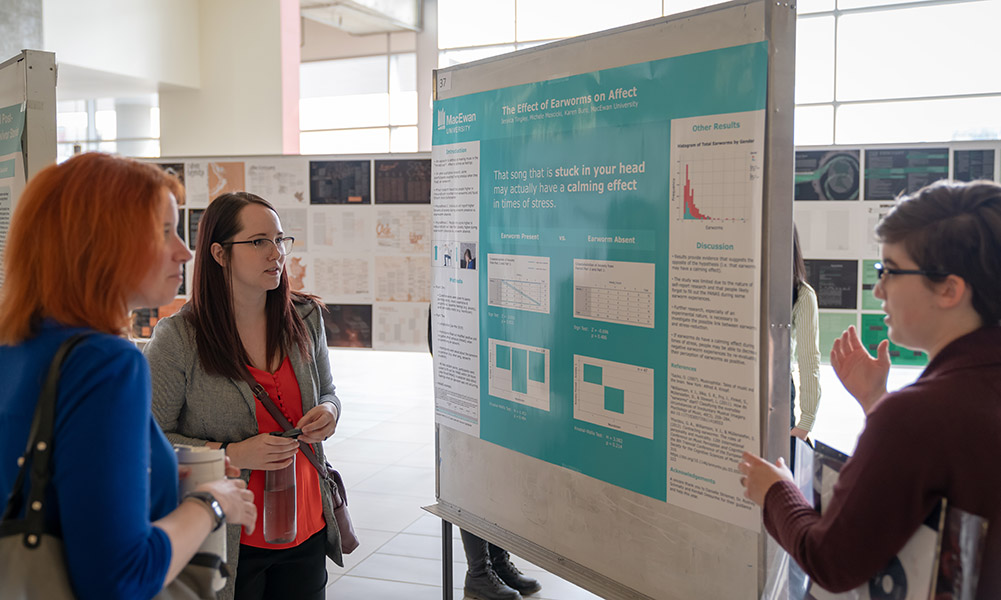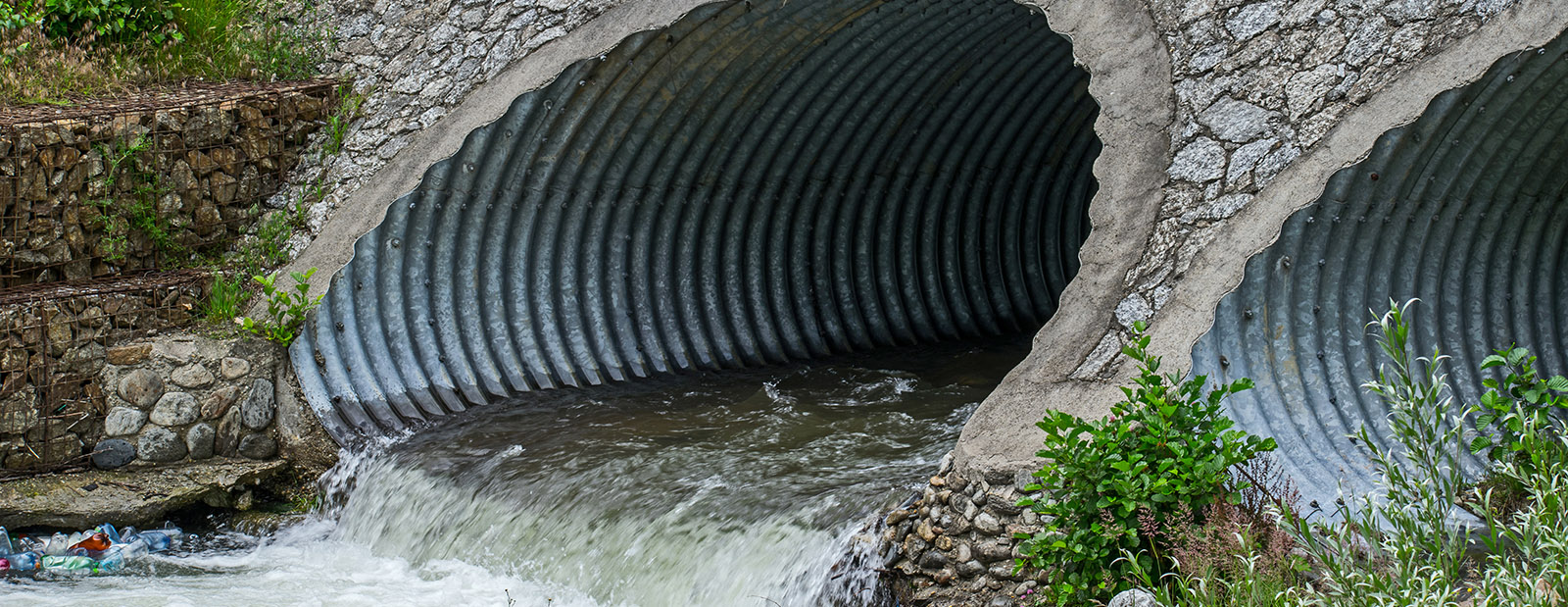When Dr. Matthew Ross began studying microplastics in waterways in 2016, his focus was on wastewater treatment plants. It made sense given other research tying treatment plants to microplastics (from washing synthetic clothes, etc.).
But when he and his team of researchers followed the water downstream from Devon to Fort Saskatchewan, they didn’t find a connection between microplastics and Edmonton’s Gold Bar Wastewater Treatment Plant, so Dr. Ross started looking for a source hidden in plain sight.
“Stormwater runs off the road, into a pipe and we never really think about it again,” says the associate professor in the Department of Physical Sciences. “A lot of people might be surprised to learn that much of that stormwater is discharged directly into the river untreated.”
Working with samples gathered during rain events throughout the summer of 2017 by colleagues in Calgary who monitor stormwater, Dr. Ross and a series of 10 MacEwan students who have contributed to this work over the past three years looked at the concentration of microplastics during different conditions. They analyzed concentrations during individual rain events, along with samples of the water that regularly trickles through the stormwater pipes from groundwater and activities like washing cars or watering lawns.
While Dr. Ross expected to find a considerable amount of microplastics in stormwater runoff, he was surprised by the volume.
 See all events
See all events
“During a single rain event – one rainy Tuesday in July, for example – millions of microplastics are washed from a single outfall (the point where a waste stream enters a body of water) into the river,” he explains. “This is 100 times more than what we see getting discharged from wastewater treatment plants and clearly a significant source of microplastics entering waterways from cities.”
Most of those microplastics Dr. Ross and his student researchers extracted were fibres, likely being shed from clothing, along with black rubbery fragments that are probably tire-wear particles (recent studies found that a chemical released into the water from those fragments to be acutely lethal to coho salmon and species of trout, char and sturgeon).
Microplastics are a hot topic for researchers, including several studies measuring the concentration of microplastics in stormwater. But Dr. Ross’s study is among the first to quantify the amount discharged from individual outfalls and connect that data with how much of that water is making its way through the stormwater pipes. That connection, he explains, tells another important part of the story.
“Knowing the volume of microplastics in both baseflow and stormwater runoff is the first step in beginning to manage the problem,” says Dr. Ross. “Using this information, municipalities can look at ways to remediate and control the discharge of microplastics – whether through rain gardens, stormwater ponds or other infrastructure that helps filter them out.”
The effectiveness of one particular intervention – stormwater ponds – is where this research intersects with another series of ongoing studies Dr. Ross is working on with Dr. David Locky, an associate professor in the Department of Biological Sciences.
For the past few years, the two researchers have engaged more than 10 MacEwan students in work that explores the volume of microplastics in the ponds and whether those plastics are making their way into the aquatic invertebrate species that live there.
It’s complex work, explains Dr. Ross. “While river water and stormwater runoff are easy matrixes to use, stormwater ponds have so much algae and other organic material growing in them that it complicates analysis.”
That meant coming up with new methods and devices to clean the water to extract small particles and collect quality data. Equipped with those devices, the researchers plan to head out to stormwater ponds again this summer.
Dr. Ross also plans to keep an eye on stormwater runoff. He hopes to take a more nuanced look at runoff throughout a single rain event and see what happens in the spring when snow accumulated during the winter months melts.
“In the summer, accumulated microplastics would get washed off every couple of weeks, but what happens to concentrations when there is four or five months’ worth of snow accumulation?” he asks. “There are still many important questions to answer when it comes to managing microplastics the best we can.”
 Meet Dr. Ross
Meet Dr. Ross
